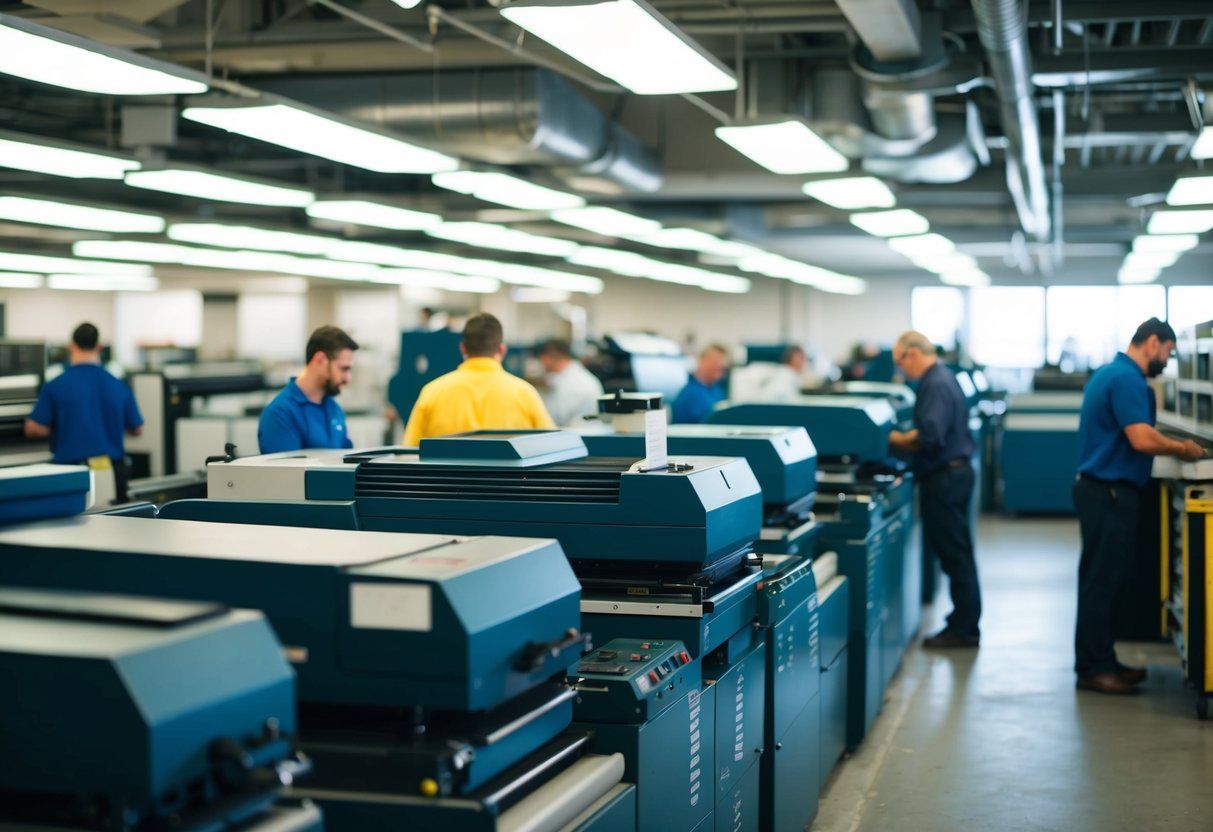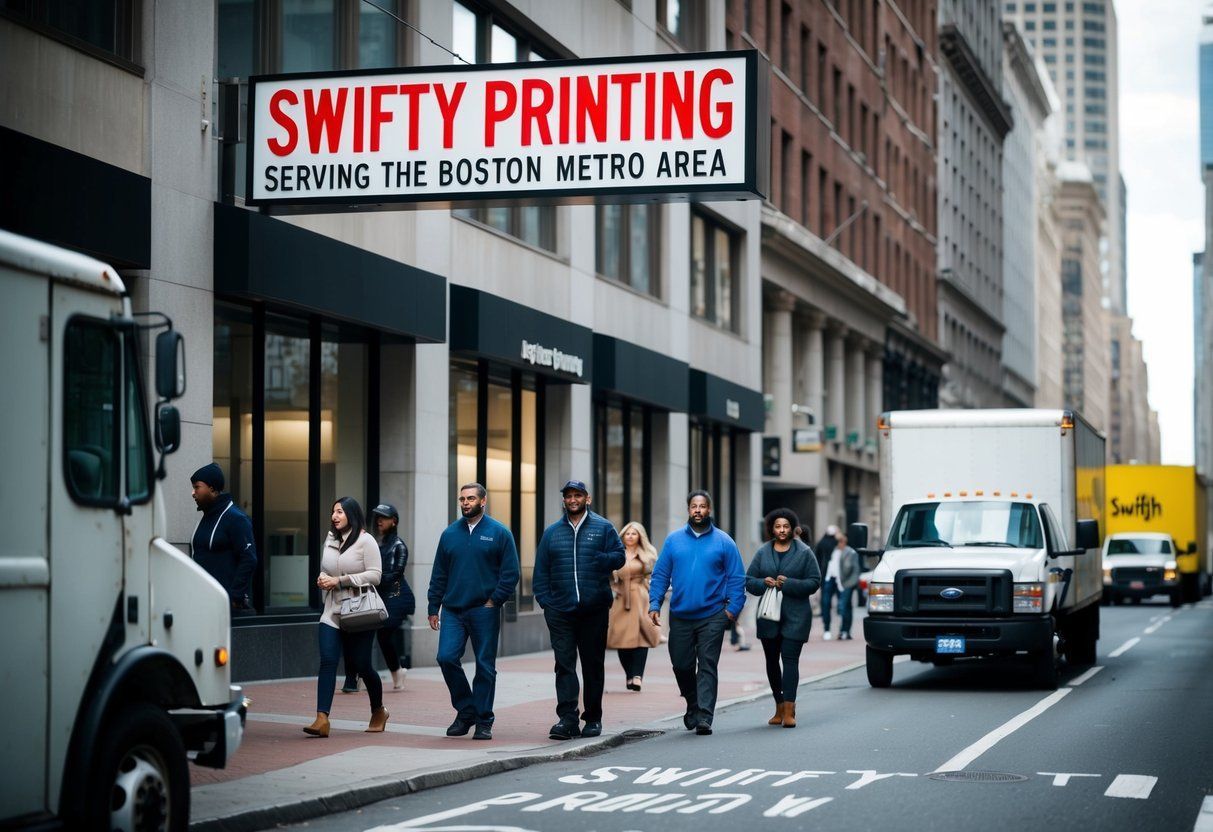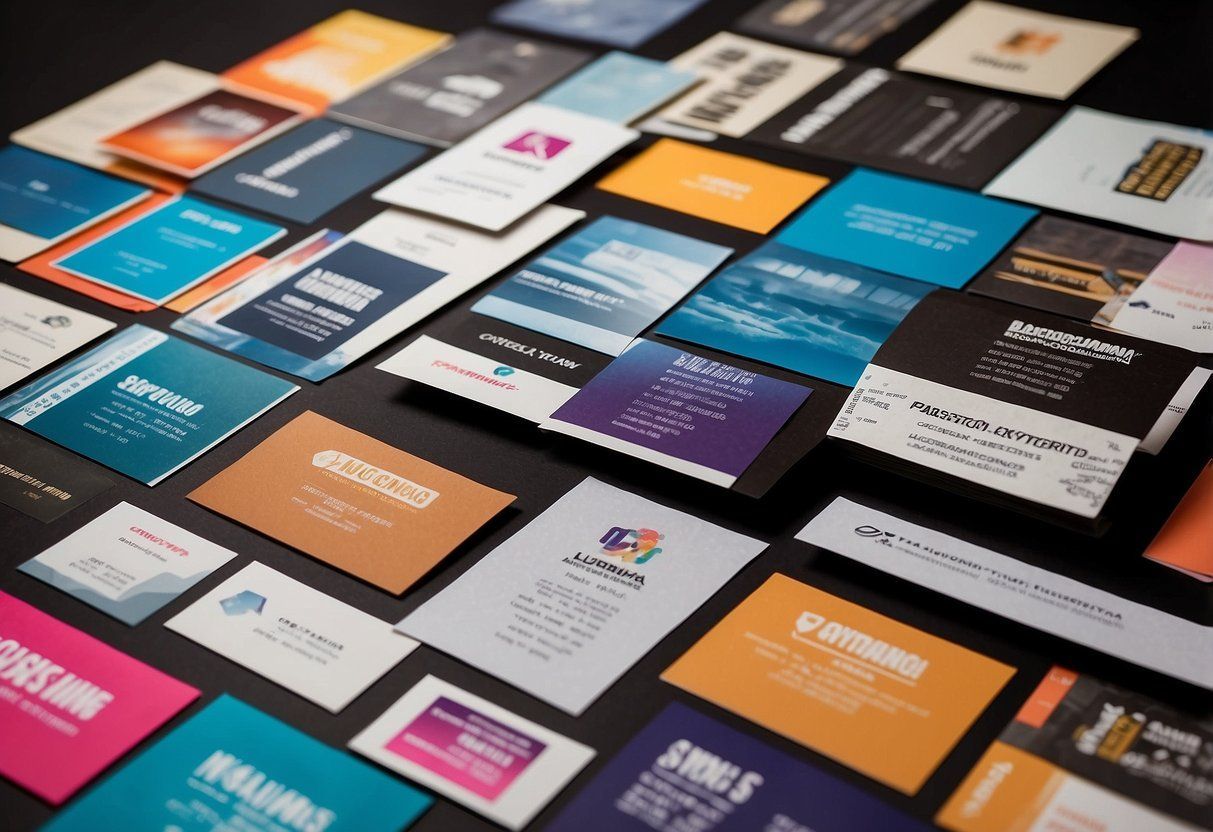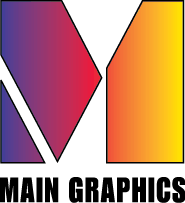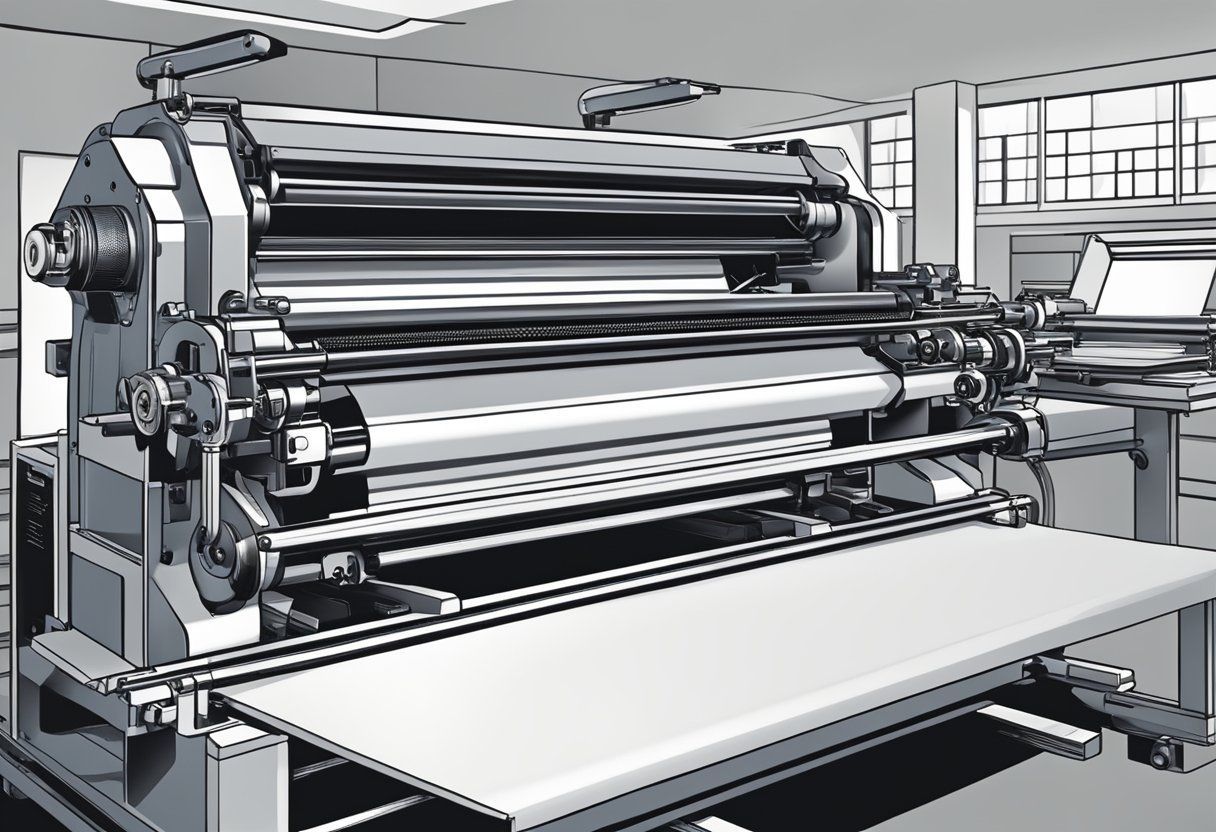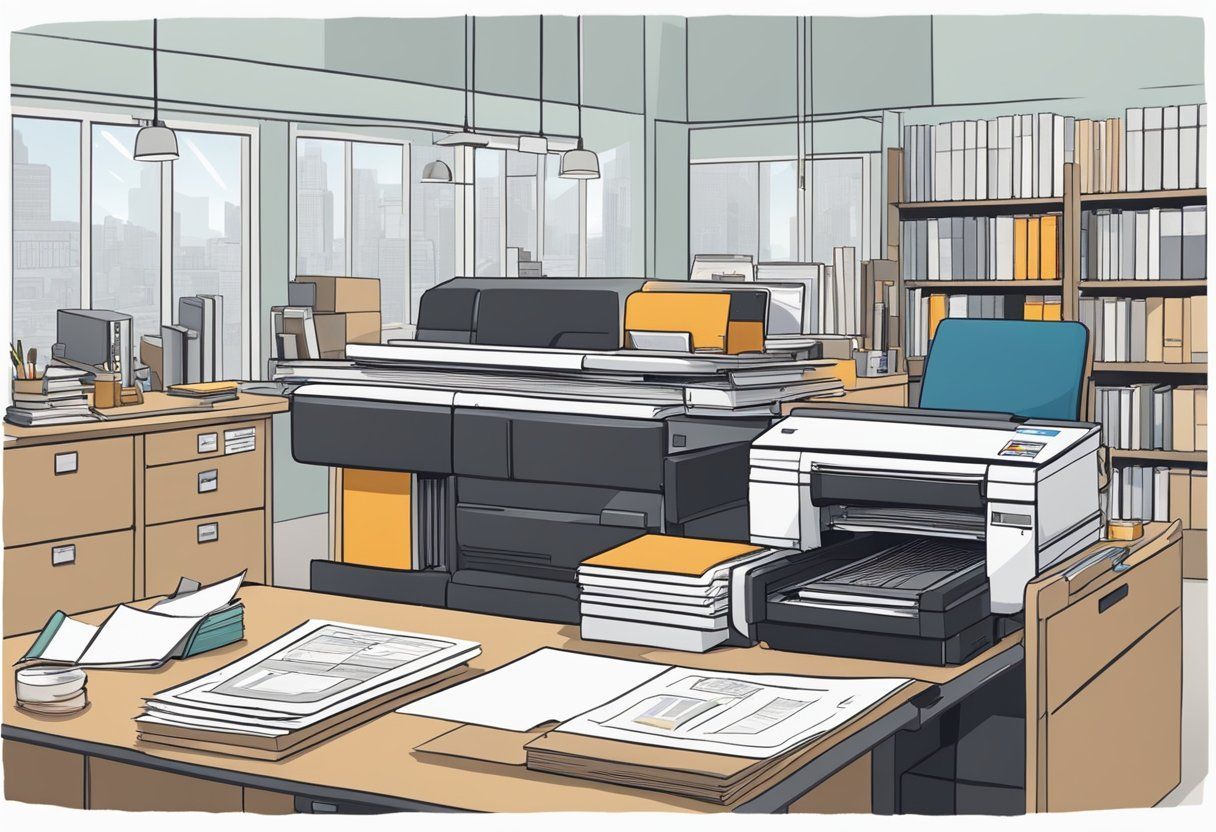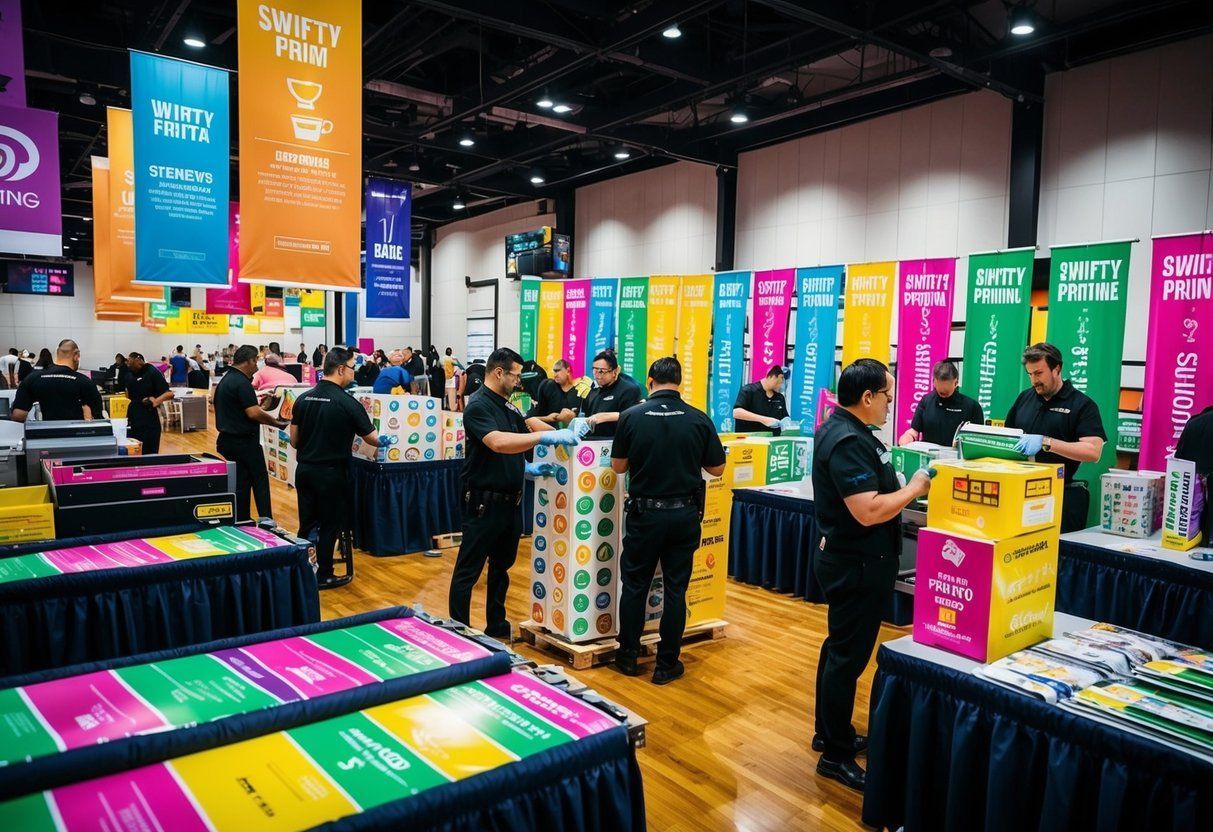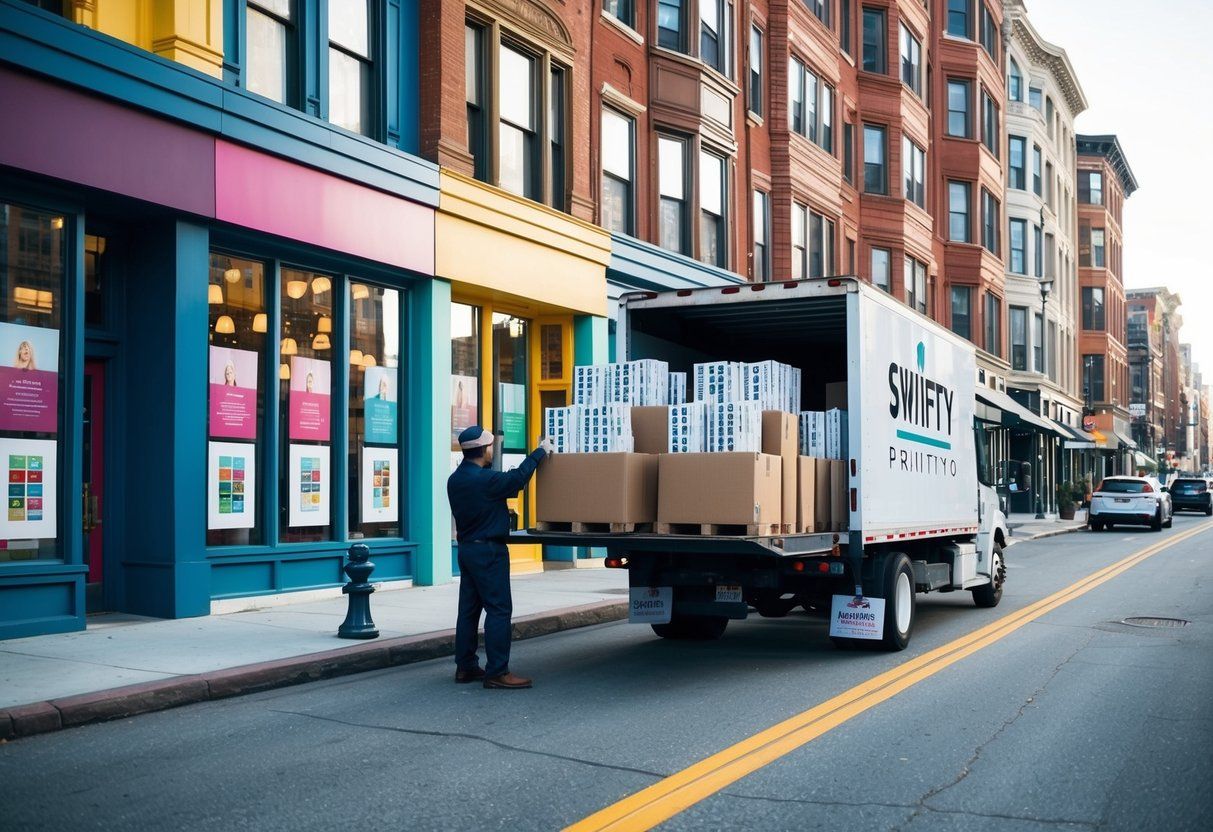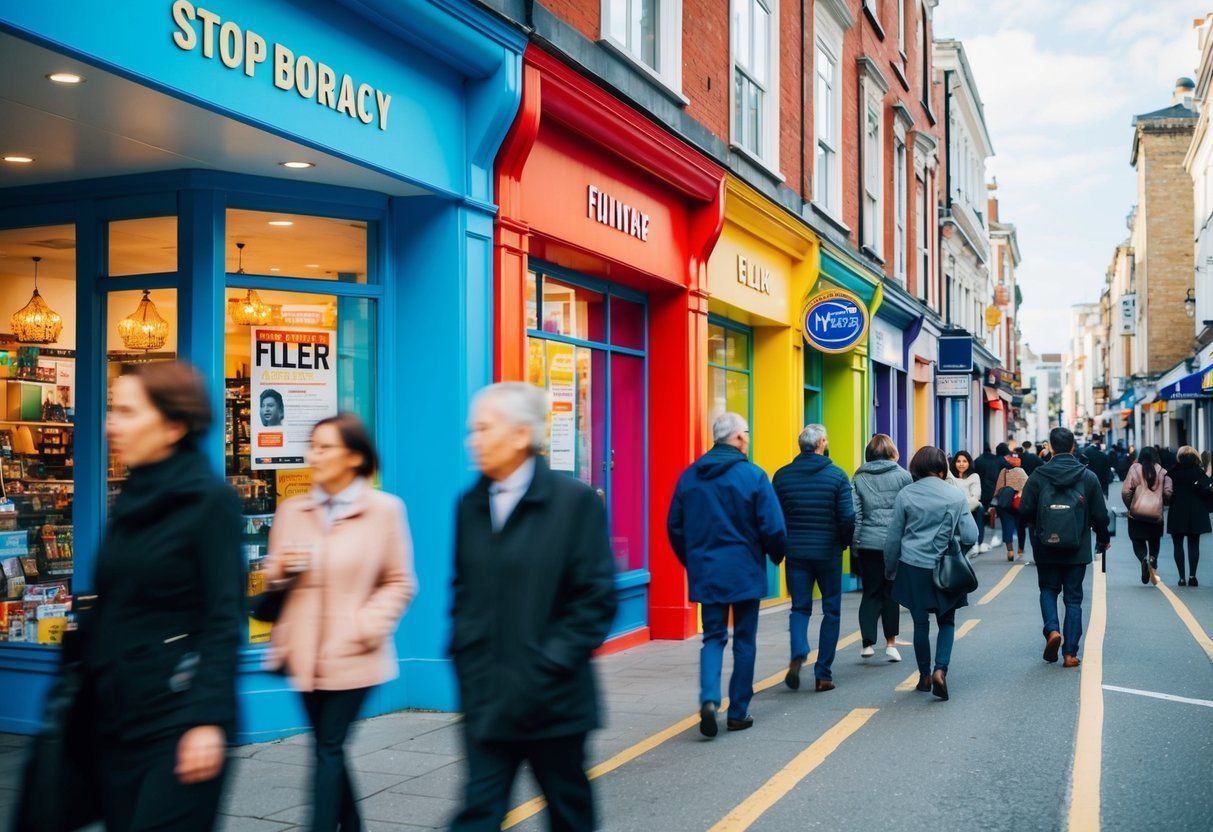Banner Printing Use Cases: Enhancing Brand Visibility and Event Engagement
Banner printing serves as a versatile tool for both businesses and private individuals, proving useful in various scenarios. These large, durable displays are common in advertising , offering a high-impact method of presenting information, branding, and promotions to the public. They come in a multitude of sizes and materials, each suited to specific use cases and environmental conditions.
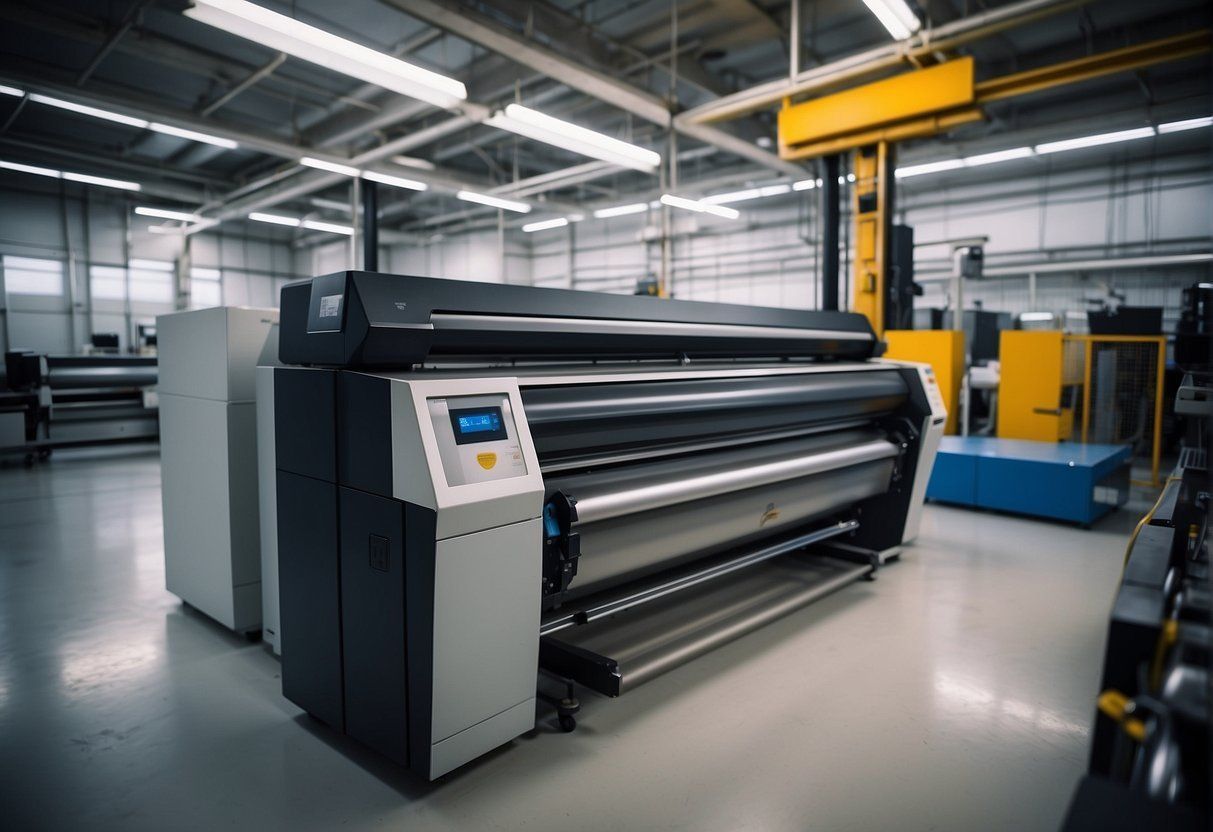
Retail environments frequently utilize banners to announce sales, guide customer flow, or highlight new products. Due to their visibility, banners can act as silent salespeople, effectively communicating messages in busy shopping areas or tradeshows. They can be strategically placed both indoors and outdoors to catch the eye of potential customers, often using bold graphics and concise text to convey their messaging quickly.
Outside of the commercial domain, banners are also instrumental in community events, such as festivals, markets, or sporting events, providing directions, information, and sponsorship acknowledgements. Educational institutions and non-profits leverage banner printing to inform and engage audiences about their missions, upcoming events, and campaigns, reiterating their presence within the community and encouraging participation and support.
Basics of Banner Printing
When considering banner printing, it is crucial to understand the variety of materials available, determine the appropriate size and location, craft impactful design elements, and choose the most suitable printing techniques and finishes.
Understanding Banner Materials
The selection of banner material plays a vital role in the durability and presentation of the end product. Vinyl is often preferred for its robustness and weather resistance, making it ideal for outdoor banners. Fabric banners, crafted from polyester blends, offer an elegant look and are better suited for indoor settings due to their less durable nature. Canvas is another option that brings a textured, artistic feel to banner designs. The choice of material should reflect the quality expected by the target audience and serve the intended purpose effectively.
Selecting the Right Size and Location
Determining the right size for a banner is essential for visibility and readability. The location is equally important; considering whether the banner will be displayed indoors or outdoors influences the size choice. Outdoors banners require larger fonts and more robust materials to withstand the elements. Indoors banners can be smaller with more detailed graphics. Size should always be tailored to the viewing distance and location dynamics, ensuring the message reaches the intended audience clearly.
Design Elements for Impact
An impactful banner design incorporates high-quality images and a color scheme that is both eye-catching and harmonious. The background and graphics should complement each other, while simple design keeps the message clear and focused. Fonts should be legible at a distance, and the use of bold colors can draw attention. It’s paramount to balance aesthetic appeal with a straightforward message that connects with the audience.
Printing Techniques and Finishes
Banner printing techniques range from digital printing , which is versatile and cost-effective, to methods that involve heat and pressure. The latter can enhance the quality and longevity of the banner. Finishes such as glossy or matte can be applied based on where the banner will be displayed. A glossy finish may enhance colors but can create glare outdoors, whereas a matte finish reduces reflection and is easier to read in bright settings. Seams and protection against environmental factors are also considerations to extend the lifespan of the banner.
Advanced Banner Customizations
In the realm of banner production, advanced customizations can significantly enhance the visual impact and functionality of banners for various applications, from special events to school celebrations.
Specialized Banner Types
When considering specialized banners, one has several types to choose from. Retractable banners are ideal for trade shows and conferences due to their portability. Mesh banners are best for outdoor use where wind is a factor. Pole banners add a vertical dimension and visibility along streets or on campus. Fabric banners provide an upscale feel and are often used indoors, while vinyl banners are the workhorses due to their durability and all-weather usage. For maximum exposure, custom printed banners can be printed on both sides .
Detailing with Seams, Hem, and Grommets
Detailing ensures longevity and practical mounting of banners. A hem involves folding the edges and securing them to create a clean finish that adds strength. Grommets are metal rings inserted into holes in the material to assist with hanging and are essential for outdoor banners to prevent tearing. The placement and number of grommets can be customized to suit specific display needs.
Custom Graphics and High-Resolution Images
Custom graphics are crucial for creating an eye-catching banner. It is important to work with a graphic designer who can translate a vision into an effective design. High-quality images should be used with a high resolution to ensure they do not pixelate upon enlargement. Incorporating illustrations and logos is common for brand recognition and message delivery on custom printed banners.
- Resolution: Minimum 150 dpi for large prints
- File Types: TIFF, EPS, AI, or high-quality PDF
Selecting Fonts and Colors
Choosing the right fonts and colors is key to banner readability and aesthetic appeal. A bold font can make a banner stand out and be readable from a distance. Color choices should be contrasting but complementary, to catch the eye without causing strain.
- Color Contrast Examples:
- Black text on a white background
- White text on a blue background
The use of a digital print process allows for a broader color palette, enabling precise color matching for brand consistency.
Practical Applications for Banner Use
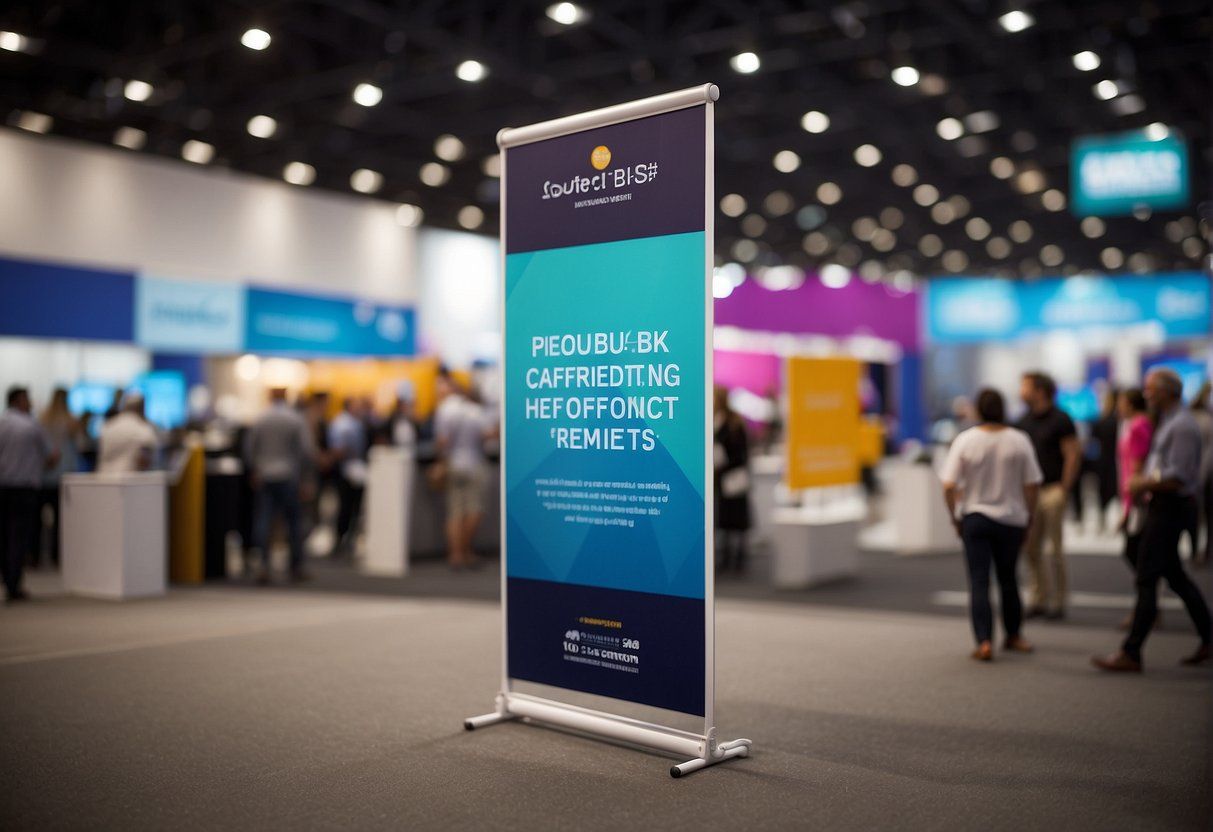
Banners serve as a versatile marketing tool , adept at conveying messages to a targeted audience, whether to boost sales or enhance the visibility of events. Their size and design options allow businesses and institutions to harness these tools effectively in a variety of environments.
Promoting Business and Sales
Businesses often leverage banners as a strategy to attract customers and promote sales. A well-placed storefront banner can announce special events or sales, capturing the attention of passersby. These banners are designed to be large enough to be noticeable and impactful, but not so large as to overwhelm the space. They function as an essential part of a company’s marketing tool kit, particularly during key sales periods.
- Location: High-traffic areas for maximum visibility.
- Message: Clear, concise, and compelling sale announcements.
- Design: Bold colors and readable text to draw in potential customers.
Enhancing Events and Trade Shows
At events like trade shows and conferences , banners are integral for branding and direction. They provide necessary info at the reception or presentation areas, guiding attendees and reinforcing the event’s theme. Companies often use banners to create a coherent aesthetic throughout the event space , ensuring their brand stands out.
- Size & Placement: Vary to suit booth dimensions and audience line of sight.
- Durability: Use of weatherproof materials for outdoor events.
- Utility: Multiple uses, from booth identifiers to educational displays.
Educational and Institutional Signage
In schools and other educational settings, banners display educational content, celebrate special events , and reinforce school spirit. They are placed in common areas like the reception or main hall, providing students and visitors with key information .
- Content: School achievements, event dates, or welcome messages.
- Location & Visibility: Strategically placed for optimal student engagement.
Outdoor Advertising with Banners
Outdoor banners must be especially durable to withstand environmental elements. They are a staple for businesses looking to advertise in outdoor settings due to their weatherproof nature. The size and content of these banners are critical, as they need to be seen from a distance and communicate the message quickly and effectively.
- Material: Robust, high-quality fabrics that resist fading and damage.
- Purpose: Inform potential customers about products, services, and offers.
This section taps into the adaptability of banners across differing contexts, emphasizing their function as a means of communication that offers visibility to various types of messages in numerous settings.
The Banner Life Cycle

Banners, an essential tool for advertising and announcements, vary greatly in quality and durability. The life cycle of a banner is heavily influenced by its maintenance and the way it is stored when not in use.
Maintenance and Durability
Quality and durability are the cornerstones of a banner’s lifespan. Premium banners , typically made from high-quality materials such as vinyl, can withstand extreme weather conditions, keeping their integrity against waterproof and heat . The finish, often a gloss or matte laminate, provides additional protection , maintaining the banner’s vibrant colors and structural strength.
- Standard Banners : Often for short-term use, may lack heavy-duty features but are economical.
- Premium Banners : Designed for long-term and repeated use, with enhanced features for durability.
It is imperative for banners of all types and sizes to undergo regular maintenance. Cleaning methods vary depending on the material but should be gentle to avoid damaging the print.
Storage and Reusability
Storing banners correctly ensures they can be reused and retain their appearance for subsequent displays. Rolled storage is recommended for most banners to prevent creases and folding damage.
- Vinyl Banners : Roll them with the graphic facing outward to avoid ink transfer and creasing.
- Fabric Banners : Roll or fold neatly, avoiding sharp folds that can create permanent creases.
For optimal longevity, banners should be stored in a cool, dry place away from direct sunlight to prevent fading and material degradation. Reusing banners is not only cost-effective but also environmentally friendly, reducing waste and promoting sustainability in banner usage.
Additional Resources and Support
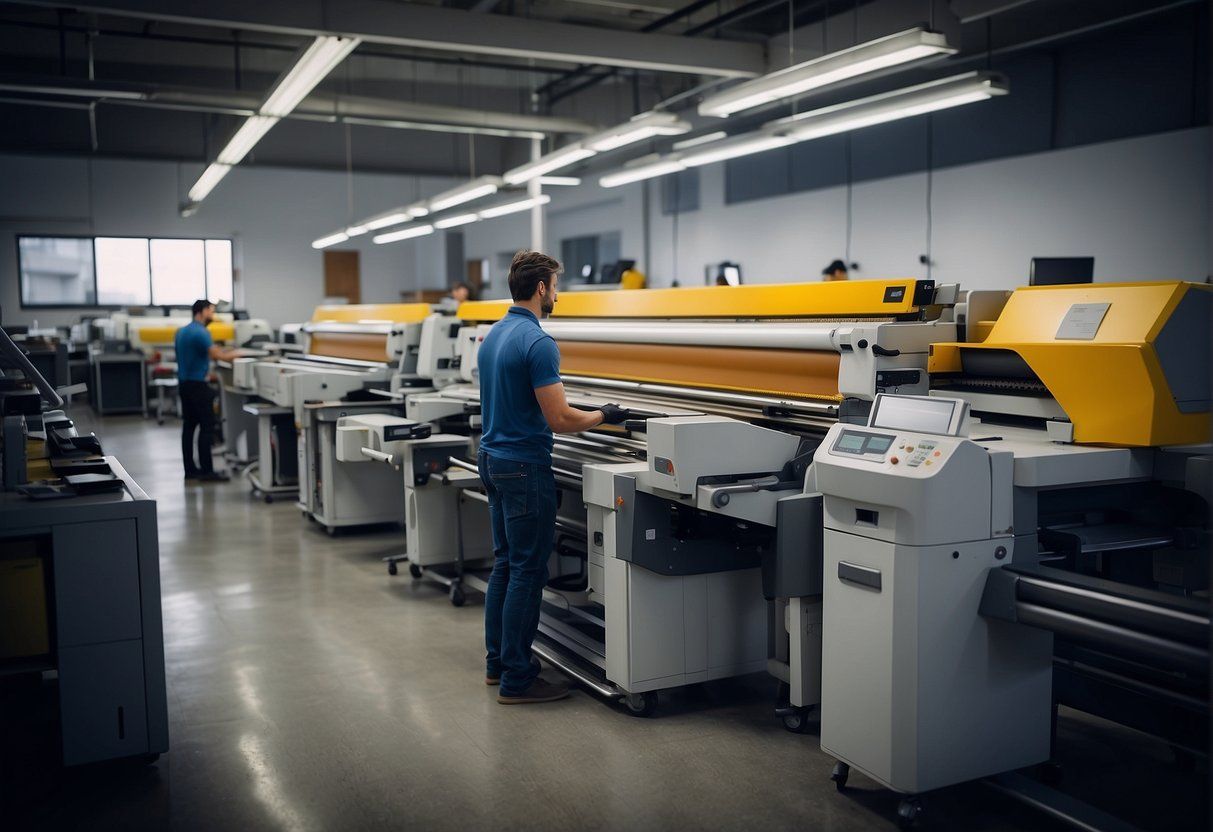
To ensure that banner printing projects meet the highest standards, one must have access to supportive resources and guidance. The following subsections provide crucial information to aid in the creation of professional and impactful banners.
FAQs and Troubleshooting
When encountering issues with banner printing, frequently asked questions (FAQs) and troubleshooting guides prove invaluable. They can offer immediate solutions for common problems such as color inconsistencies, image alignment, and lighting considerations. It is imperative to check these resources before contacting support, as they can save time and effort.
- Color Issues : Ensure that the design adheres to the on-brand palette and that the monitor and printer color profiles match.
- Image Quality : Use high-resolution images to prevent pixelation when printed on large banners.
- Lighting Conditions : Consider the banner’s placement and the lighting conditions it will face to maintain visibility.
Design Templates and Tools
Templates serve as a solid foundation for creating brochures and banners that are both on-brand and visually appealing. These templates often come with preset dimensions and guidelines, simplifying the design process.
- Brochure and Banner Templates : Provide a variety of on-brand layout options ensuring consistent branding.
- Design Tools : Suggest specialized software or online platforms for creating and personalizing designs.
For best results, always proofread the final design meticulously to eliminate any typographical errors and ensure all information is accurately displayed. Furthermore, using the recommended templates and tools can significantly enhance the efficiency and quality of banner creation.
Conclusion
Banner printing is a versatile tool in the field of marketing and communication. It offers numerous applications across various industries.
Key use cases include:
- Events and Conferences: Banners provide a visual anchor for attendees, conveying schedules and key information.
- Trade Shows: They serve as an effective tool for branding and attracting potential customers to booths.
- Retail Promotions: Retailers utilize banners to announce sales or new product launches to entice foot traffic.
In addition to marketing, banners also serve educational and directive purposes in public spaces, guiding individuals and providing important notices.
- Durability: Banners are made to withstand environmental factors, making them suitable for both indoor and outdoor use.
- Customization: They can be tailored to specific sizes, shapes, and designs to meet the needs of a campaign or event.
The utility of banner printing in reaching a target audience and its cost-effectiveness make it a mainstay in promotional strategies. Its continued relevance is supported by advancements in printing technology that enhance quality and accessibility.
It’s imperative for businesses and organizations to consider how banner printing can complement their communication efforts and to utilize this medium effectively to achieve their desired outcomes.…
